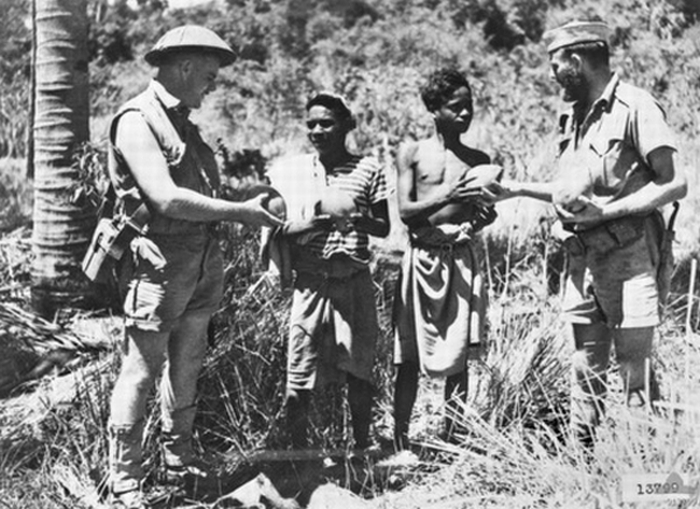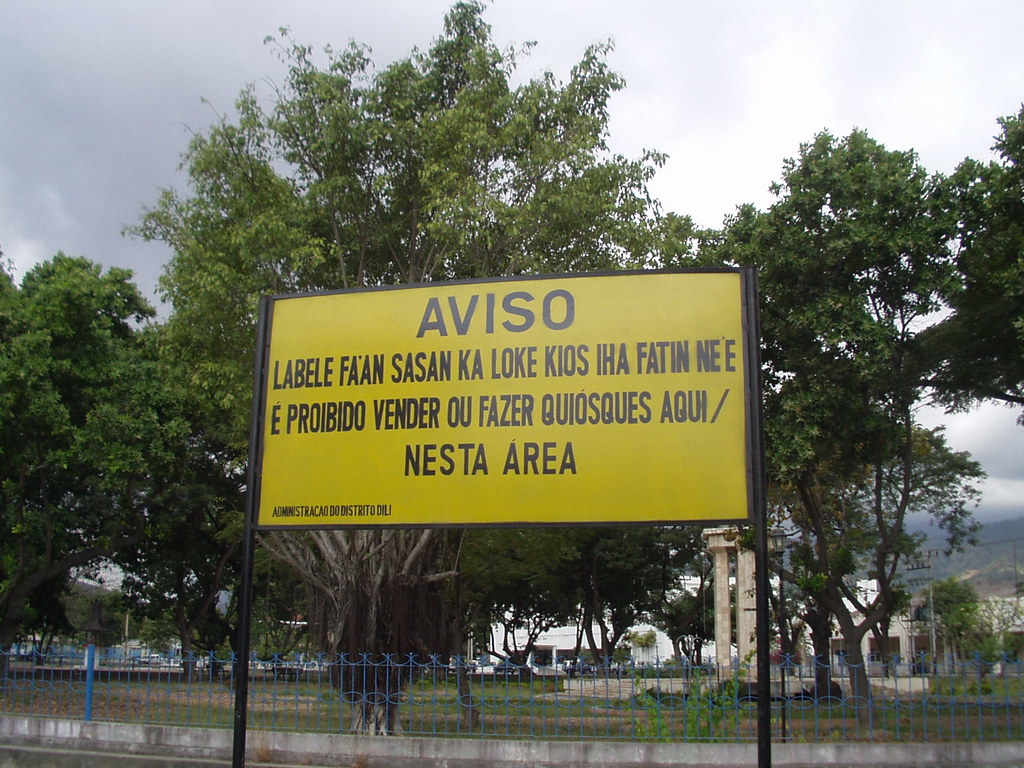The word Timor is the Portguese spelling of the Malay word timur, which means east. And the Portuguese word Leste also means east. So, essentially, the country’s name means “East East.” Just in case you weren’t sure which direction it is.
Timor-Leste is located on the eastern side of the island of Timor in Indonesia. It’s part of the Lesser Sunda Islands group and located across the Timor Sea north of the Australian territories of Western Australia and Northern Territory. It also includes the islands of Jaco and Atauro Island and an exclave on West Timor (part of Indonesia) called Oecusse. It’s only 8-10º south of the equator, so their climate is generally hot and humid. The Nino Konis Santana National Park has the last tropical dry forested area remaining in the country. There are also a number of coral reef systems off the northern part of the country that are at risk.
Humans from the areas around Sri Lanka, Australia, and other areas around Southeast Asia started to move into this area around 42,000 years ago. This was followed by a second migration wave by the Melanesians about 5000 years ago. People from southern China and Indochina (mainland Southeast Asia subcontinent) made up one of the final migration waves. They were part of the established trade networks between China, Malaysia, Indonesia, and India. The hot ticket items at the time were sandalwood (I love sandalwood!), honey, wax, and unfortunately, slaves. However, it was the sweet and woody smell of the sandalwood that attracted the Europeans to the island during the 1500s and 1600s. The Portuguese were the first Europeans to take control of the island. They renamed it Portuguese Timor and declared Dili the capital in the late 1760s. The Dutch occupied the western half of the island until 1914 when it was handed to Indonesia and the eastern half remained Portuguese. The Portuguese really didn’t invest much money into the half-island colony, and sandalwood and coffee were still its main crops heading into the 20th century. As Portugal’s economy started to struggle, they started demanding more money from these colonies, and the Timorese people were not happy with that arrangement. World War II came, and Japan occupied the capital city of Dili, using the natural mountainous terrain for guerilla warfare -- hence, the Battle of Timor. The estimated number of Timorese deaths are between 40,000-70,000. Japan surrendered at the end of the war, and Portugal regained its control over its side of the island. In 1974, Portugal essentially backed out of East Timor, leaving the two political parties to fight it out. After a resisted coup, they declared its independence from Portugal. Fearing they’d become a communist state, Indonesia entered the picture and made them one of their provinces -- only nine days later. This occupation was not well received to say the least, basically because it led to about 25 years of conflict and tens of thousands of deaths from killings (and also related hunger and illness). In 2002, they were finally granted independence once again, this time from Indonesia. It was this time when they officially changed their name to Timor-Leste and decided to keep Portuguese as their language. During this time, they’ve held elections and have joined a number of international organizations.
The capital city of Dili is located on the northern side of the island. It’s also their most important port city and part of the free trade zone set up between Timor-Leste, Australia, and Indonesia. Although there are still quite a few buildings still standing from the Portuguese era, many buildings in Dili were damaged or destroyed in the fighting with Indonesian forces in 1999. One of its main attractions is the Cristo Dei of Dili, a statue of Jesus with arms extended located at the top of 597 steps on the Fatucama Peninsula (kind of similar to the famous one in Rio de Janeiro in Brazil, in my opinion). It was a gift from Indonesia to celebrate their being part of Indonesia.
Timor-Leste depends on a few of their main exports like coffee (Starbucks is a major purchaser), sandalwood, marble, cinnamon, cocoa, and mung beans. Petroleum was discovered off the coasts and now receives revenue from these oil and gas reserves. However, there is still a sizable gap when it comes to income inequality. Timor-Leste actually uses the US Dollar as its currency, but it also uses the centavo as its coinage.
There are two official languages used here: Portuguese and Tetum, the original language of the island. Tetum, the Portuguese spelling of Tetun, is an Austronesian language that’s been influenced by Malay, Indonesian, Portuguese, and other indiginous languages. Sometimes English and Indonesian are used in Timor-Leste as well. A number of other languages are also spoken on the island: Tetum Prasa, Mambai, Makasai, Tetum Terik, Baikenu, Kemak, Bunak, Tokodede, Fataluku, and quite a few others (including a few that are on the endangered list). Portuguese is the language of educational instruction, but the country has a special program where they get teachers from the Philippines to teach English.
Because of the strong Portuguese influence, nearly 97-98% of the population are Roman Catholic. (Timor-Leste and the Philippines are the only Roman Catholic countries in Asia.) There really weren’t that many Roman Catholics there to begin with, but after Indonesia took over, they forced people to believe in one God and get rid of their animist beliefs. They went from a 20% Catholic rate to over 95% in a matter of decades, making it one of the most Catholic countries in the world. Of those who aren’t Roman Catholic, the rest are mainly made up of Protestants, Muslims, Buddhists, Hindu, and some combination of other or indigenous religions.
 |
| José Ramos-Horta |
 |
| Carlos Filipe Ximenes Belo |
In 1996, two men from Timor-Leste were given one of the most prestigious awards in the world. Carlos Filipe Ximenes Belo (a Catholic bishop) and José Ramos-Horta (previous Prime Minister and President) were awarded the Nobel Peace Prize for their work toward peacefully ending the conflict with Indonesia. And I’m glad it ended well because Timorese food, with its various Asian and Portuguese influences, seems like it’s going to be quite tasty.
Up next: art and literature






No comments:
Post a Comment